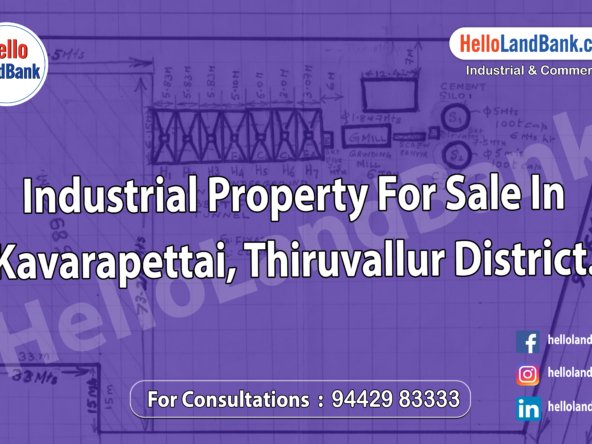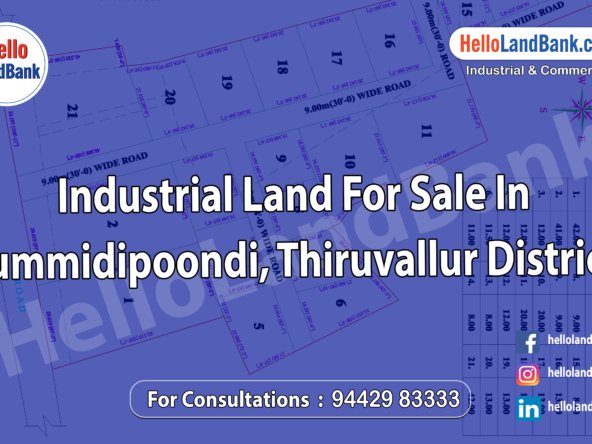Estimating the cost of developing industrial land involves evaluating various factors related to site preparation, infrastructure development, construction, and other project expenses. Here are steps to estimate the cost of developing industrial land:
1. Site Assessment and Analysis:
- Conduct a site assessment to evaluate the characteristics, conditions, and constraints of the industrial land. Assess factors such as site size, topography, soil conditions, environmental considerations, utilities, access, and zoning regulations. Identify any site-specific challenges or opportunities that may affect development costs.
2. Develop a Preliminary Site Plan:
- Develop a preliminary site plan outlining the proposed layout, infrastructure requirements, and development components for the industrial land. Determine the size and configuration of industrial buildings, access roads, parking areas, utilities, landscaping, and other site improvements. Use the site plan as a basis for estimating development costs.
3. Cost Estimation for Site Preparation:
- Estimate the cost of site preparation activities such as clearing, grading, excavation, soil stabilization, and drainage improvements. Consider costs for earthmoving equipment, materials, labor, and site remediation efforts if necessary. Factor in any environmental mitigation measures or regulatory compliance requirements that may affect site preparation costs.
4. Infrastructure Development Costs:
- Estimate the cost of developing infrastructure necessary to support industrial operations, including utilities, roads, and other site improvements. Assess costs for installing water supply systems, sewer systems, electrical distribution networks, natural gas lines, telecommunications infrastructure, and stormwater management facilities. Consider costs for engineering design, permitting, construction, and utility connections.
5. Construction Costs for Industrial Buildings:
- Estimate the cost of constructing industrial buildings, structures, and facilities on the site. Consider factors such as building size, building type, construction materials, building systems, and architectural finishes. Obtain cost estimates from contractors, architects, or construction professionals based on detailed building plans, specifications, and project requirements.
6. Labor and Material Costs:
- Estimate labor and material costs associated with construction activities, including materials procurement, labor wages, subcontractor fees, and overhead expenses. Obtain quotes or bids from suppliers, subcontractors, and vendors for materials, equipment, and construction services. Consider market conditions, material availability, and labor rates when estimating costs.
7. Contingency and Risk Management:
- Include contingency allowances and risk management provisions in the cost estimate to account for unforeseen circumstances, project risks, and cost overruns. Allocate a percentage of the total project budget as a contingency fund to address potential changes, delays, or unexpected expenses that may arise during the development process.
8. Soft Costs and Development Fees:
- Factor in soft costs and development fees associated with project planning, design, permitting, financing, and project management. Include costs for architectural and engineering design services, permit fees, legal fees, insurance premiums, financing costs, and administrative expenses. Budget for professional fees, consultant fees, and other project-related expenses incurred throughout the development process.
9. Land Acquisition Costs:
- Include land acquisition costs if the industrial land is not yet owned or if additional parcels need to be acquired for the development project. Consider land purchase prices, closing costs, title insurance, surveys, appraisals, and financing fees associated with acquiring land for industrial development.
10. Financial Analysis and Budgeting:
- Compile all estimated costs into a comprehensive development budget and conduct a financial analysis to assess the project’s feasibility and viability. Evaluate the project’s financial performance, return on investment (ROI), and cash flow projections to determine whether the project is financially viable and meets investment criteria. Adjust the budget as needed to optimize project economics and achieve financial objectives.
By following these steps and conducting thorough cost estimations, industrial land developers can develop realistic budgets, allocate resources effectively, and mitigate financial risks associated with industrial land development projects. Collaboration with experienced professionals, contractors, and consultants is essential for accurately estimating development costs and ensuring project success.




